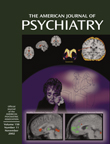Much like academic careers or personal lines of development, textbooks must opt for pathways favoring either breadth or depth, with only the rare exception striking the right balance between the two. It goes without saying that the elusive equilibrium is all the more difficult to find in an edited volume, where competing forces are not only those of scope and content but also those of clinical preference and personal writing style. Originally published in German in 1997, this volume’s appearance in English is not only a welcome addition to the field of child and adolescent psychotherapy but a good example of a felicitous truce between those typically opposing directions. Empirically up-to-date despite the inevitable delay imposed by its translation, the book’s major strength is in bridging the gap in the application of evidence-based treatments to patients seen in everyday frontline practice.
The volume provides an overview of the major psychotherapeutic techniques and their suitability to developmental stage and syndrome complex. The focus throughout is concrete and practical rather than encyclopedic: 10 chapters in the book’s second section are devoted to as many different therapeutic modalities, with no attempt made to cover all or even a substantial fraction of those in existence. (A meticulous recent count
[1] painstakingly placed the number of such techniques at 551.) By the same token, the level of detail provided is not that conferred by a textbook devoted to a particular treatment: readers cannot expect to graduate as experts in—for example—interpersonal psychotherapy, but they can realistically anticipate a good grasp of the theory as well as the necessary elements to incorporate the technique into their routine clinical work.
The 17 chapters in part 3 are each geared toward a specific disorder, including some, such as stuttering and dyslexia, not regularly included in comparable volumes. A concise overview of clinical presentation, etiology, pathogenesis, epidemiology, and prognosis is presented for each condition, setting the stage for the ensuing nuts-and-bolts specifics of psychotherapeutic interventions. Clear diagrams and algorithms walk the reader through assessment and treatment strategies that afford the practitioner a framework for clinical action. Frequently resorting to case vignettes and therapy transcripts to exemplify theoretical constructs, each chapter is well balanced against a solid backbone of empirical support. In combination, these complementary structural elements result in a flexible armamentarium conducive to effective therapeutic planning. All 17 chapters are refreshingly nondogmatic and eclectic in nature. They do not provide hard-and-fast prescriptions for or against any given treatment approach. Instead, primacy is conferred to the demonstration of therapeutic efficacy. A case in point is the adaptive realigning of traditional analytic thinking that is advocated in the service of manual-driven, empirically proven interventions:
Therapists coming from a psychodynamic perspective will probably find it easy to grasp the IPT [interpersonal psychotherapy] techniques and strategies, which share with psychodynamic approaches a focus on emotions and on their meaning in an interpersonal context. (p. 135)
The aims of the volume as an applied resource are further evident in its first and last sections. The former starts by drawing the broad distinctions between behavior- and insight-oriented techniques, emphasizing their focus on problem solving and interpretation rather than on a deeper theoretical analysis of their many differences. A concise research agenda is laid out in an early chapter that also provides an effective primer on the quantitative skills necessary to make sense of the literature (key words: meta-analysis, effect size). The book’s final section is divided along treatment setting rather than diagnostic lines, and although the approaches are very much a reflection of the specific programs their authors are affiliated with (all three are with the University of Marburg), the results are not quaint or irrelevant. Indeed, such programs can (and have already, as in the case of inpatient and community-based programs for schizophrenia and eating disorders) serve as models worthy of emulation.
The book is not without its idiosyncratic peculiarities, many of which can be pegged on the translation or on the remaining differences between ICD-10 and DSM-IV nomenclatures. The term “perspectivity” (p. 190), although evocative, seems an example of the former; the discussion of “hysterical personality disorder” (p. 308) and a table (Table 18.1) laying out the differences between “psychosomatic” and “conversion” disorders, the latter. The fact that cognitive and behavior therapies are each given separate chapters is one of the addressable editorial decisions that could have added some repetition; the other echoes that creep in as the reader moves along are perhaps to be expected in a multiauthored volume such as this. Overall, these and other such flaws come out painlessly in the final wash. On the whole, the volume is likely to serve new students as an effective introductory text to psychotherapy with youngsters. To seasoned practitioners, it may provide a good and impartial view of their neighbor’s lawn. Take note: their grass may in fact be greener.

